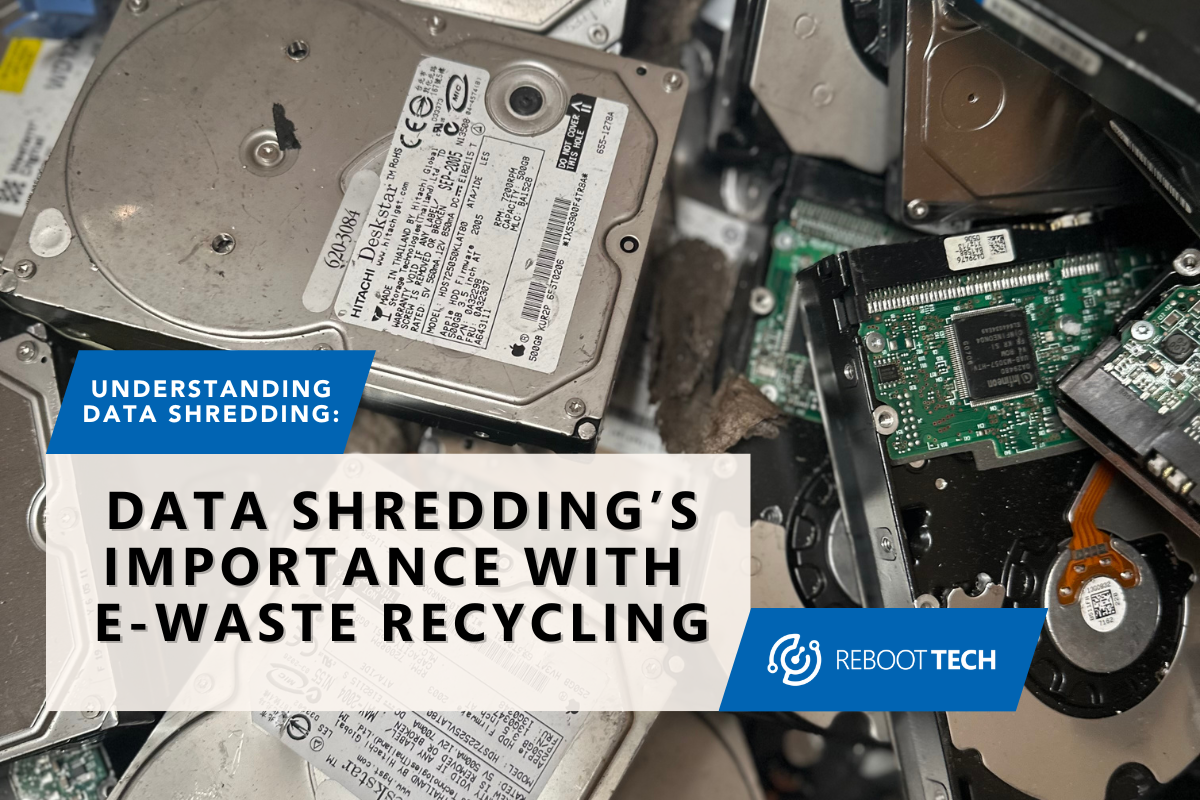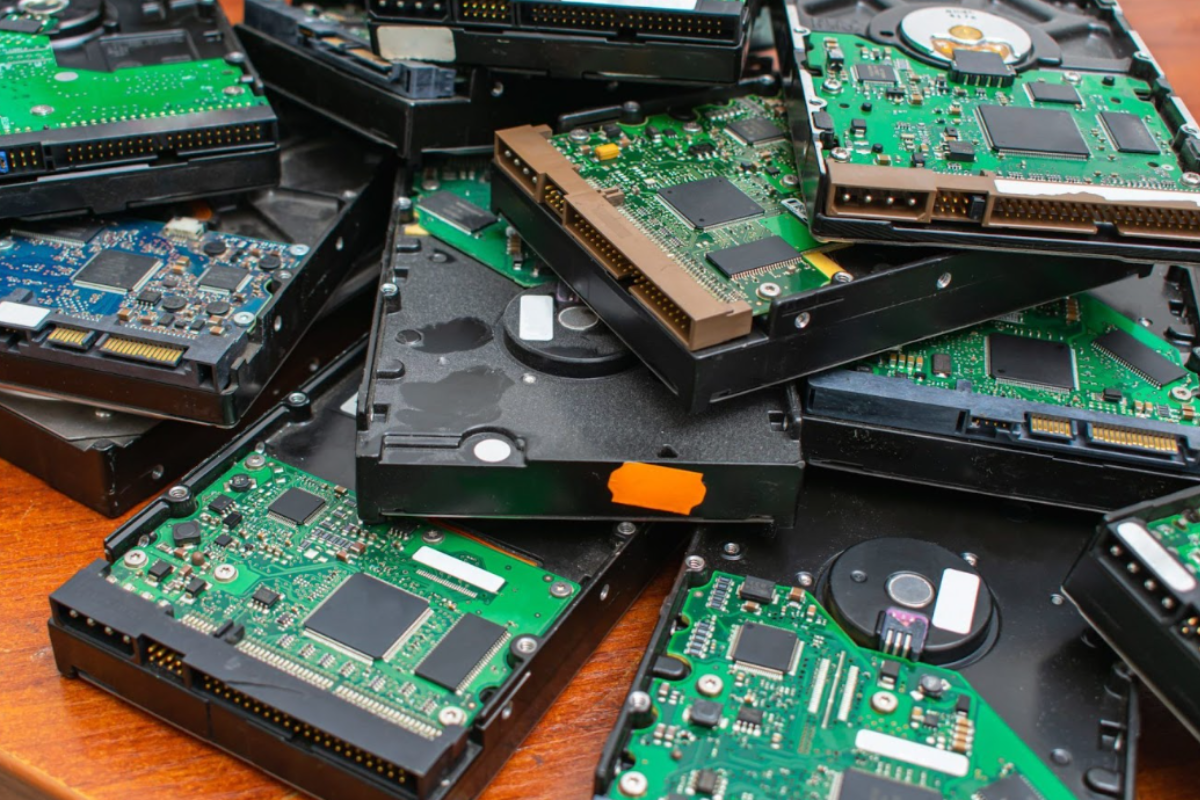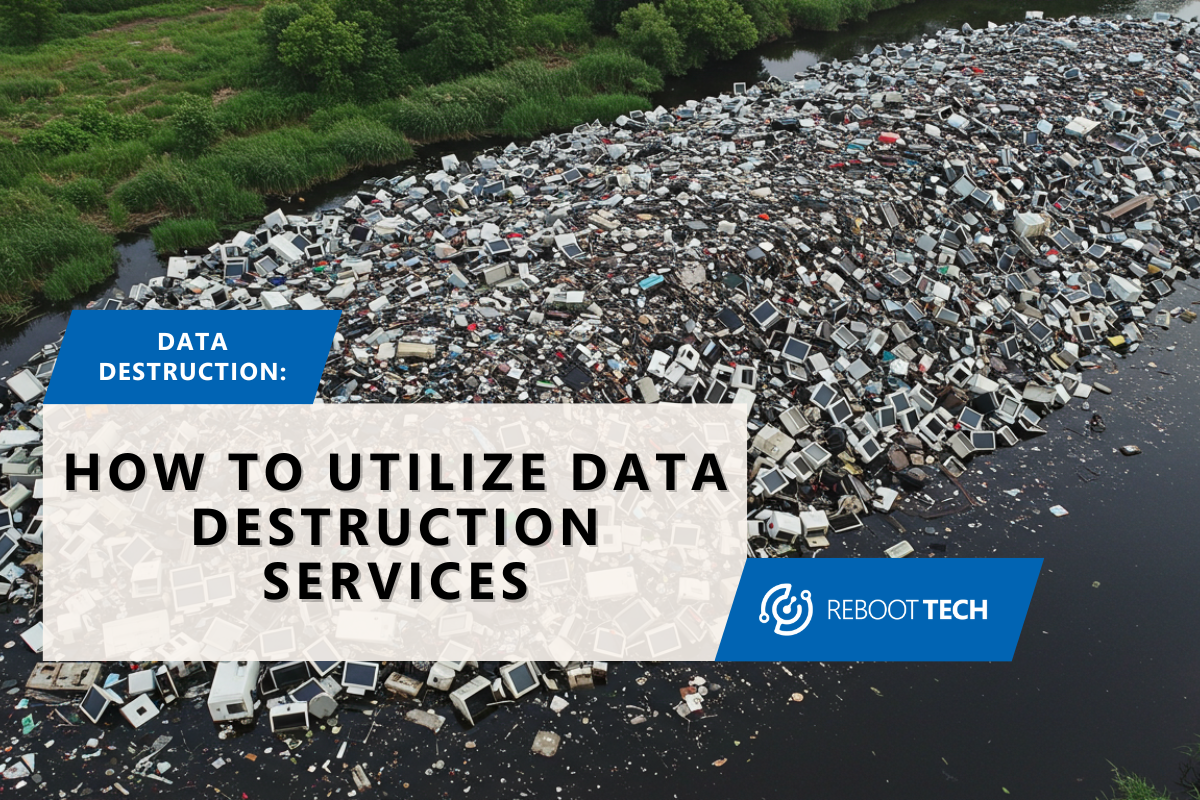
The Importance of Data Shredding with E-waste Recycling
Imagine waking up one morning to discover that your business’s sensitive data has fallen into the wrong hands. Customer information, proprietary secrets, financial records—gone, and now at the mercy of cybercriminals.
This scenario is a nightmare for any responsible business owner. Yet, it is a reality for many who fail to properly dispose of their data. Data shredding, often overlooked, is a crucial practice for safeguarding your business’s and clients’ information.
In this blog, we will delve into the importance of data shredding in maintaining data security. We’ll explore various methods of data destruction, the legal frameworks that mandate secure data disposal, and the severe consequences of neglecting these practices, such as lawsuits and data breaches. By the end, you’ll understand how to collaborate with a reliable electronic recycling and data destruction partner to ensure your data is irreversibly destroyed. Let’s uncover the layers of data shredding and why it is indispensable for any business owner.
The Importance of Data Destruction for Responsible Business Owners
Protecting Sensitive Information
For responsible business owners, protecting sensitive information is paramount. Data destruction goes beyond simply deleting files; it’s about ensuring that the information cannot be recovered or misused. When data is merely deleted, it can often be restored with basic recovery software. Therefore, proper data destruction techniques are necessary to protect your business from potential threats.
Safeguarding Your Business Reputation
A data breach can tarnish your business’s reputation in an instant. Customers and clients trust you with their information, expecting it to be handled with care and confidentiality. Failure to destroy data properly can lead to unauthorized access, resulting in identity theft, financial loss, and a breach of trust. Responsible data destruction helps maintain your business’s integrity and assures your clients that their information is in safe hands.
Legal Compliance
Various regulations mandate the proper disposal of sensitive information. Ignoring these laws can result in hefty fines and legal repercussions. Compliance with data destruction policies is not just about avoiding penalties; it’s about demonstrating your commitment to protecting your clients’ privacy. By adhering to these regulations, you show that your business values data security and privacy.

Types of Data Destruction
1. Overwriting
Overwriting is one of the most common methods of data destruction. It involves replacing old data with new, meaningless data. This process makes the original data irretrievable.
While overwriting is cost-effective and can be done with software tools, it is crucial to ensure that the software meets industry standards for data wiping. Overwriting is particularly suitable for hard drives and other magnetic media.
2. Degaussing
Degaussing is another effective method, particularly for magnetic media. It uses a strong magnetic field to disrupt the magnetic domains on a storage device, rendering the data unreadable. Degaussing is highly effective but can be expensive and requires specialized equipment. It is often used by organizations handling highly sensitive information, such as government agencies and large corporations.

3. Physical Destruction
Physical data destruction is the most definitive method of data destruction. It involves physically breaking down the storage devices, ensuring that the data cannot be recovered. This can be done through shredding, crushing, or incinerating the devices.
Physical destruction is often used for obsolete or damaged equipment that cannot be securely wiped. While it is the most effective method, it also generates electronic waste, which needs to be managed responsibly.
Policies and Regulations
Understanding the Legal Landscape
Numerous regulations govern data destruction, varying by industry and region. In the United States, laws such as the Health Insurance Portability and Accountability Act (HIPAA) and the Gramm-Leach-Bliley Act (GLBA) set strict guidelines for the disposal of personal information. The European Union’s General Data Protection Regulation (GDPR) mandates that businesses must implement appropriate technical and organizational measures to ensure data security.
Implementing Internal Policies
Developing and implementing robust internal policies for data destruction is crucial. These policies should outline the procedures for disposing of different types of data, specify the methods to be used, and designate personnel responsible for overseeing the process. Regular training for employees on data destruction practices is essential to ensure compliance and prevent accidental data breaches.
Avoiding Lawsuits and Data Breaches
The Cost of Negligence
Neglecting proper data destruction can lead to severe consequences, including lawsuits and data breaches. When sensitive information is compromised, businesses may face legal action from affected parties. The financial implications of such lawsuits, combined with the damage to the business’s reputation, can be devastating.

Preventative Measures
To avoid these pitfalls, businesses must take proactive measures. This includes regularly auditing data destruction practices, staying informed about the latest regulations, and working with trusted data destruction partners. Implementing encryption and secure data storage solutions can further mitigate the risk of data breaches.
How to Work with a Responsible Electronic Recycling and Data Destruction Partner
Choosing the Right Partner
Selecting a reliable partner for electronic recycling and data destruction is critical. Look for companies that adhere to industry standards and have certifications such as R2 (Responsible Recycling) and e-Stewards. These certifications ensure that the company follows best practices for data destruction and electronic waste management.
Evaluating Their Processes
When choosing a partner, evaluate their data destruction processes. Ensure they offer a range of destruction methods suitable for different types of data and storage devices. Inquire about their chain of custody procedures to ensure that your data remains secure throughout the destruction process.
Ensuring Transparency and Accountability
A trustworthy data destruction partner should provide detailed documentation of the destruction process. This includes certificates of destruction, which verify that your data has been securely and irreversibly destroyed. Regular audits and reports from your partner can help ensure ongoing compliance with data destruction policies.
A Vital Practice
Data shredding is a vital practice for protecting sensitive information and maintaining the integrity of your business. By understanding the importance of data destruction, implementing effective policies, and partnering with responsible data destruction providers, you can safeguard your business and clients from the devastating effects of data breaches and legal issues.
In an era where data is a valuable commodity, ensuring its secure disposal is not just a legal obligation but a moral one. Embrace the best practices of data shredding, and rest assured that your business and clients’ information is secure. Protect your data, protect your reputation, and lead by example in responsible data management.






